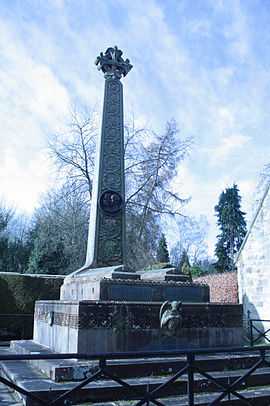Richard Baird Smith

Richard Baird Smith (31 December 1818 – 13 December 1861), British engineer officer, was the son of Richard Smith (1794-1863), a surgeon in the Royal Navy.
Life
He was educated at Lasswade and Addiscombe Military Seminary, and joined the Madras Engineers in 1838. Being transferred to the Bengal Engineers, he served through the second Anglo-Sikh War, and was present at the battles of Hatiiwal, Aliwal and Sobraon. He was then for some years employed on canal work, and when the Indian Mutiny broke out was in charge of Roorkee. He promptly concentrated the Europeans in the workshops, and though the native sappers deserted, his forethought prevented any loss of life.
When Delhi was invested he was appointed chief engineer in charge of the siege works. He reached Delhi on the end of July, and immediately advised General Barnard to assault the city. Barnard died while the advice was still under consideration, and his successor, General Reed, could not be induced to follow it; and when Reed in turn was succeeded by Archdale Wilson, the besiegers were so weakened by losses that the moment for a successful attack had passed.
Baird Smith, however, prevented Wilson from relaxing his hold on Delhi until the arrival of John Nicholson with reinforcements from the Punjab, and of the siege train from Phillour. Nicholson then joined Baird Smith in compelling Wilson to make the assault, which proved successful, on 14 September. Baird Smith was ably assisted by Captain Alexander Taylor, but Nicholson was unjust to Baird Smith in assigning to Taylor the chief credit for the siege operations.
After the capture of Delhi he returned to Roorkee and to civil employment, and for a time the value of his military services was insufficiently recognized. After the Mutiny he was made ADC to Queen Victoria, became secretary to the government of India in the public works department, and gained well-deserved credit in the famine of 1861. But the onerous character of this work, following a wound and illness at Delhi, broke down his constitution, and he died at sea on 13 December 1861. He married a daughter of De Quincey, who long survived him. See Colonel HM Vibart, Richard Baird Smith (1897).
Memorials
A memorial to Smith by George Gilbert Scott stands in St Paul's Cathedral in Calcutta.[1]
A very large memorial to both Smith and his father stands in their home town of Lasswade just north of the Old Kirkyard.
Further reading
- Vibart, H.M. (1894). Addiscombe: its heroes and men of note. Westminster: Archibald Constable. pp. 461–70.
References
![]() This article incorporates text from a publication now in the public domain: Chisholm, Hugh, ed. (1911). Encyclopædia Britannica (11th ed.). Cambridge University Press.
This article incorporates text from a publication now in the public domain: Chisholm, Hugh, ed. (1911). Encyclopædia Britannica (11th ed.). Cambridge University Press.
|